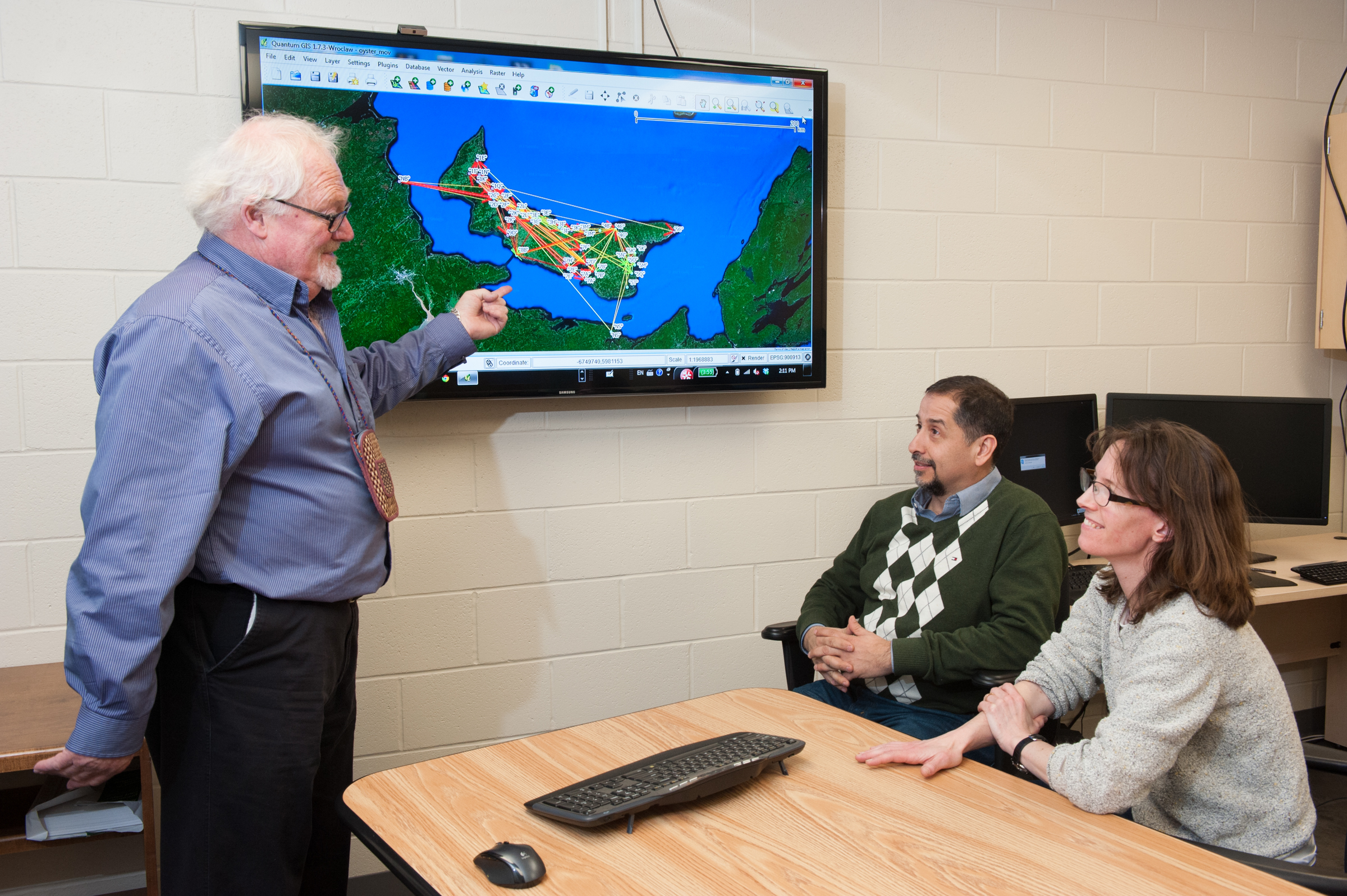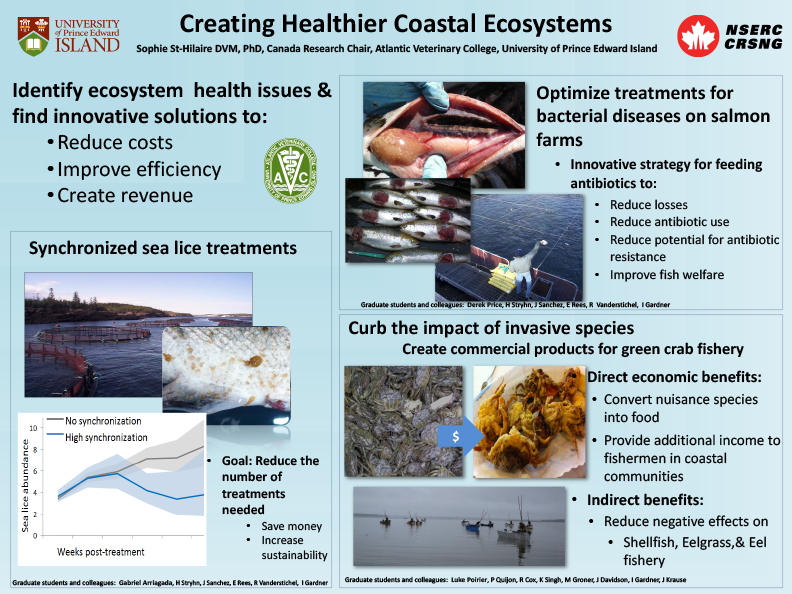“MSX is a disease that can seriously affect the oyster industry,” said Dr. Jeff Davidson, a professor of aquatic and ecosystem health at the Atlantic Veterinary College at UPEI. “The industry on the Island takes it very seriously. We’ve been extremely lucky to not be affected thus far. That’s why this research is important for both prevention and mitigation.”
MSX is a shellfish disease first reported in the 1950s in the state of Delaware. Caused by a parasite, the disease has since spread along the eastern US seaboard, including an outbreak in Nova Scotia in 2000.

Dr. Jeff Davidson, professor of aquatic ecosystem health; Dr. Javier Sanchez, associate professor of epidemiology; Dr. Sophie St-Hilaire, Canada Research Chair in Integrated Health Research for Sustainable Aquaculture.
“When an outbreak of an infectious disease occurs, the initial investigation identifies the source of the problem, and tracing the chain of movements of the affected animals is carried out ,” explained Dr. Davidson. “After the fact, that’s a really difficult thing to do. Food is moved from producer to processor to wholesaler to market, but it can take a complex journey to do so. If we can map this movement before—heaven forbid—we have an incident, we’re already several steps ahead of the game.”
Dr. Davidson is working with Dr. Sophie St-Hilaire, UPEI’s Canada Research Chair in Integrated Health Research for Sustainable Aquaculture, and Dr. Javier Sanchez, an associate professor of epidemiology and a specialist in risk analysis. Together, they’ve created a network analysis—essentially, a map which plots the movements shellfish make from producer to market.
“Co-operation from the industry through the first round of this mapping project has been excellent,” said Dr. St-Hilaire. “With their data, we’ve been able to identify what we’re calling the ‘hot spots’ on Prince Edward Island. These are places of high traffic, where shellfish seed are collected and distributed to several locations. These would be the areas to watch in case of an outbreak, and they’re spots that should be monitored regularly from a food safety surveillance perspective.”
The AVC team has brought in scientists from The Virginia Institute of Marine Science.
“Their expertise in MSX is invaluable,” said Dr. Sanchez. “They can help us look at the pathways and movement of the parasite and disease, based on their own experiences.”
The next phases of the project include creating mitigation plans for possible future outbreaks. The team is also investigating ways that industry can constantly update the network analysis map.
“That’s crucial,” said Dr. Sanchez. “Our current map is a snapshot of the movements of shellfish on PEI as they exist right now. But those pathways change as harvesters switch processors and so on. We want to create a resource that, at any point, we can stop and say: this is how shellfish move across the province.”
The shellfish network analysis is a project of the Canada Excellence Research Chair (CERC) in Aquatic Epidemiology, the federal Department of Fisheries and Oceans (DFO), the provincial Department of Fisheries, Aquaculture, and Rural Development, the Canadian Regulatory Veterinary Epidemiology Network (CRVE-net), the Canadian Food Inspection Agency (CFIA), the PEI Shellfish Association, and the PEI Aquaculture Alliance.
“More than 70 per cent of the mussels eaten in North America come from Prince Edward Island,” said Dr. Ian Gardner, UPEI’s CERC in Aquatic Epidemiology. “We’re helping to ensure the safety of this food for consumers through an exciting project being carried out by Dr. St-Hilaire, Dr. Sanchez and Dr. Davidson. The end product is beneficial to both the industry and to the consumers of shellfish in North America.”





